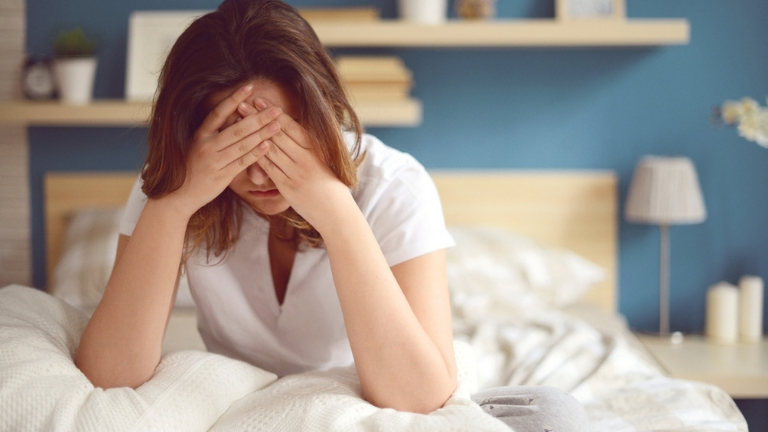Snoring and laboured breathing are just some symptoms of sleep apnoea but it doesn’t just affect fat old guys. Young women are affected too and often their only symptom is being tired all the time
Most of us have known a snorer or two in our day, which is why we’re probably aware of the term, Obstructive sleep apnoea (OSA), a wearisome condition not just for the person who has it, but for anyone who sleeps within earshot of them.
Sufferers – who stop breathing while asleep – are likely to snore loudly, make laboured sounds at night, gasp or snort in sudden starts, though it should be pointed out that some people with sleep apnoea do not snore.
Recent findings by the American Journal of Respiratory and Critical Care Medicine has found weightloss of the tongue to lessen the severity of OSA. Richard Schwab, MD, chief of Sleep Medicine says that ‘We know tongue fat is a risk factor and that sleep apnea improves when tongue fat is reduced.’
Many experts say that many young women who feel tired all the time can be secret sufferers of OSA (see below.) Perhaps that’s why OSA is often misdiagnosed, ignored, or denied.
Yet, it’s remarkably common affecting four per cent of middle-aged men and two per cent of middle-aged women in the UK, according to Dr John O’Reilly, Consultant in General and Respiratory medicine, Lead Clinician in Sleep Disorders at University Hospital Aintree, Liverpool.
Sleep apnoea affects up to 3.9 million people in the UK
Moreover, it’s so much more than a sleep disorder which keeps the household awake. Sleep apnoea, says Dr O’Reilly, is a very real health hazard to sufferers, around which have arisen myths and misunderstandings.
So, what do we all need to know about this major cause of noisy nights and broken dreams?
#1 Sufferers stop breathing at least five times an hour
OSA is a sleeping disorder where breathing stops and starts throughout the night, causing a person to intermittently have disturbed sleep, where their bodies will move them out of REM sleep into a lighter stage of sleep, and some people will actually wake up several times.
Although only 700,000 Britons are diagnosed, it affects up to 3.9 million people in the UK, says the Sleep Apnoea Trust. This figure is set to rise because of increased obesity and the ageing population – both of which are risk factors for the condition.
The stops and starts in breathing happen when the throat and tongue muscles relax for a few moments, even up to a few minutes.
Sufferers are also at increased chance of type 2 diabetes
This affects the supply of oxygen to the brain as their oxygen levels will drop and their pulse will soar. The sufferer is then jolted out of deep sleep so that the airway is opened again, and normal breath follows.
Many people may suffer this occasionally, but you would only be diagnosed with OSA if breathing stops for more than five times an hour.
The condition is dangerous because if you stop breathing whilst asleep, it leads to reductions in oxygen and higher carbon dioxide levels, which raises both blood pressure and heart rate. This brings a greater risk of heart attacks and strokes.
Sufferers are also at increased chance of type 2 diabetes, obesity, anxiety and depression and even road accident risk, along with many other related medical links which sleep apnoea causes or exacerbates.
But often the only symptoms are loud snoring, laboured breathing and drowsiness during the day, which many of us put down to insomnia, head colds and allergies, or just stress.
#2 Young women get sleep apnoea too
Although a classic sufferer will be aged over 50, overweight and male, it’s not unusual to see sleep apnoea among slim young women and men, and in fact many children also suffer from sleep apnoea and may get diagnosed with ADHD instead or labelled with tags like ‘naughty’ or ‘lazy.’
Dr John O’Reilly says: ‘Young women may not have the classic snoring and excessive sleepiness; about 20 per cent of them snore, but a lot of them don’t and they’re just tired all the time.’
‘When they’re breathing at night, the airways still block as they would in sleep apnoea, and they have a reduced flow. The effort of that breathing while they’re asleep causes some sleep disturbance unconsciously, so they don’t get good quality sleep and they wake up feeling tired and wondering why.’
He adds: ‘Sometimes they complain of anxiety or insomnia which is a subconscious awareness I think, that there’s something wrong with their breathing in their sleep.’
As a result, this group often fail to get diagnosed.
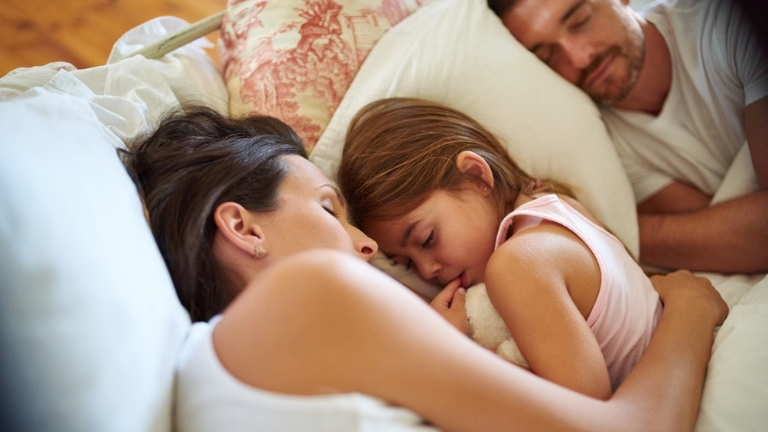
This was true for Harriet Boxall, 28, a healthcare assistant from Southend on Sea, Essex, who was not overweight. In 2015, Harriet began experiencing exhaustion, depression, panic attacks and anxiety. She was signed off to rest but her GP didn’t find anything wrong.
‘Over the next three years,’ says Harriet, ‘it came to a head. I had terrible pain in my sinus area and crushing headaches. I took antibiotics and pain relief, but nothing worked.’
A consultant ear, nose and throat surgeon diagnosed sleep apnoea and explained Harriet had large tonsils which were to blame. Last July, a respiratory consultant arranged for her to go through a sleep study where experts found Harriet stopped breathing on average 49 times an hour.
‘I was only getting about 10 minutes of solid sleep a night,’ she says. ‘I was in tears at the news, especially when I was told I was lucky I hadn’t had a heart attack or stroke. I was petrified.’
#3 The solution is a mask
There is no cure for sleep apnoea, however it can be treated very successfully with the use of a continuous positive airway pressure (CPAP) ventilator which supplies oxygen via a mask, while you sleep. About two-thirds of sufferers tolerate them well, says Dr O’Reilly.
Although large and cumbersome initially, modern CPAP machines are sleek and small, about six inches by six inches. Designed to sit on a bedside table, they are pre-set to deliver the right amount of pressurised air via a small mask over the nose to keep the airways open.
Travel versions are available for convenience on flights; most are reasonably quiet too.
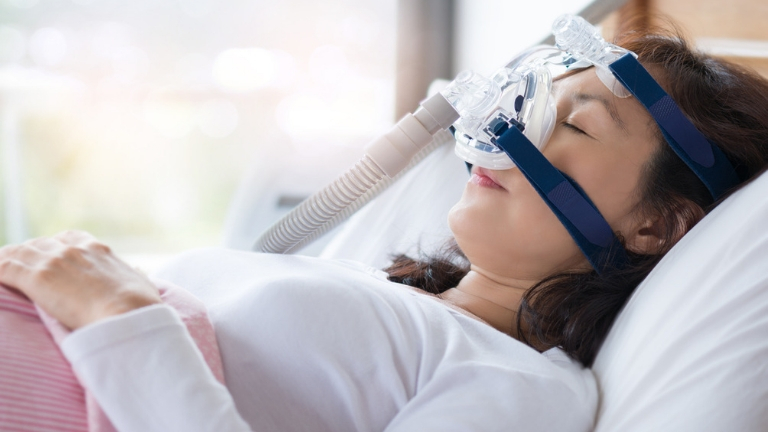
Harriet Boxall admits she struggled to get used to the mask initially but noticed the benefits almost at once. ‘Now I get great sleep every night,’ she says. ‘I am starting to get my life back.’
There are other solutions; some sufferers like Harriet who have large tonsils opt to have them removed but with mixed results, although in children the odds of a cure after tonsillectomy are higher.
The NHS considers surgery a last resort. It suggests sufferers also address their lifestyles, cutting back on alcohol, losing weight and sleeping on their sides. A Mandibular Advancement Device (MAD) used while you sleep also help some people.
This is a shield that sits around the teeth, holding the jaw and tongue forward to maximise the space at the back of the throat and needs making by a dentist.
#4 It’s not just about snorers…
A milder version of OSA – called Upper Airway Resistance Syndrome (UARS) – also exists, with similar symptoms of fatigue, daytime sleepiness, and insomnia. Some patients also experience dizziness and headaches.
Dr O’Reilly explains: ‘These are potentially treatable people who are often younger women, often a little bit overweight, with a slightly high BMI but nothing really off the scale. It’s just quite common really to see women in their thirties who are tired all the time.’
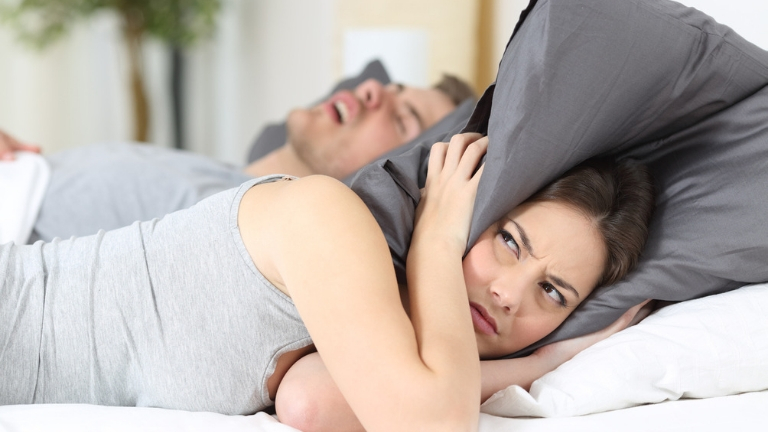
He adds: ‘If that’s the problem then we normally offer lifestyle advice: losing a bit of weight, checking the thyroid, making sure they’re not anaemic, but we do now need to consider this upper airway resistance syndrome as a mild form of sleep apnoea.’
This group wouldn’t typically be offered CPAP masks, but Dr O’Reilly thinks they can be helped this way too. ‘Usually there is a miraculous improvement within days.’
#5 Your family history may count
When Kath Hope, 57, a former music teacher from Hull, lost her then 49-year-old mother to a heart attack, the family didn’t know anything about sleep apnoea. It was only after Kath was diagnosed herself, that she made the connection.
‘My own daughter was the first person to suggest I had sleep apnoea,’ says Kath. ‘Five months before I was diagnosed, she suggested it. I just thought it was something crazy she had been reading. But, of course, she had been noticing the snores and the stopping breathing. My husband and I were just used to it.’
I was stopping breathing every two minutes
At the time, Kath admits she was ‘tired all the time’ but assumed it was due to the pressure of work. She had also developed anxiety and panic attacks over the previous 10 years but didn’t connect them to the undiagnosed sleep apnoea.
But after an ENT consultant, who she consulted on a separate issue, suggested Kath attend a sleep clinic, came the diagnosis of severe OSA. ‘It was an absolute shock,’ she says, ‘but it was a blessing in disguise because it was at the root of all my anxiety because unbeknown to me, I was stopping breathing every two minutes.’
#6 Children can be at risk
According to the British Lung Foundation, one in 30 children have OSA and it affects boys and girls equally. It’s also high in anyone with Down’s syndrome, and sleep expert Dr Stephen Sheldon believes there is a connection to attention deficit disorder too, with possible 75 per cent of these children having a sleep issue.
Among children, says Kath, who set up the patients’ support charity Hope2Sleep, one of the biggest causes of OSA is large tonsils and/or adenoids, however children have a much higher success rate of being cured by tonsillectomy and/or adenoidectomy than adults.
#7 Keeping equipment clean improves your health further
A link has been shown between OSA and a 20 per cent higher risk of pneumonia, according to a report by Taiwanese scientists in the Canadian Medical Association Journal in 2014.
This issue of effective cleaning was also highlighted in a recent survey by SoClean, which produces the world’s first automated CPAP cleaner and sanitizer.
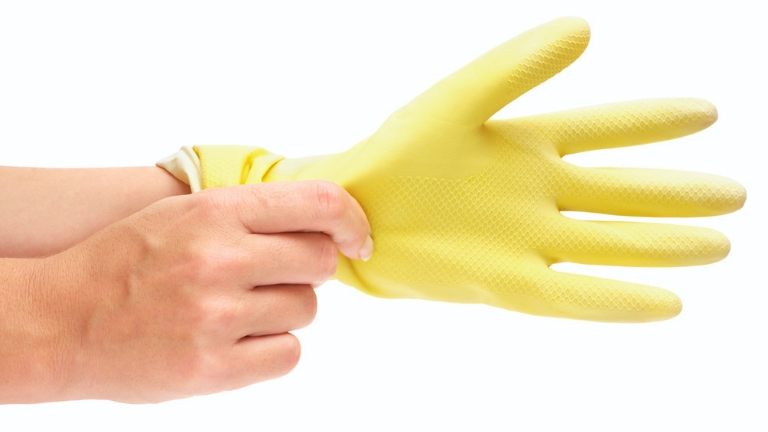
The survey found that more than 75 per cent of GPs are concerned that CPAP machines are not being cleaned properly, causing a build-up of harmful bacteria.
Yet, more than half of GPs (58 per cent) and sleep specialists (67 per cent) sampled were not aware that alternative sanitisation techniques such as activated oxygen are more advisable than cleaning equipment with soap and water.
Kath Hope says: ‘It is important to keep our equipment clean but we know patients are not cleaning their machines either through lack of understanding or lack of time.’
Hope2Sleep supports a Facebook community where sufferers can share their concerns. ‘Sometimes they report skin irritations, dry mouth or even coughing,’ she says. ‘Good cleaning habits are particularly important for people vulnerable to respiratory issues.’
#8 It can develop with the menopause
Normally the prevalence in women is about half that of men, says Dr O’Reilly, who is currently working on a multicentre trial across the UK, to identify the people who don’t meet classic OSA criteria, and might benefit from treatment.
‘But as women get older into the menopause and they develop change in hormonal function,’ he says, ‘they do get an increased risk of sleep apnoea.’
Scientists at Brown University School of Medicine, Rhode Island, USA, reported in 1999 that HRT could reduce incidence of OSA within one month.
#9 You can get tested at home
Sleep studies are offered online, says Dr O’Reilly, but he warns that medical advice needs to be sought. ‘You can go via your GP,’ he says, who would refer patients to the local hospital and probably arrange a test at a sleep clinic.
But it is also possible to ask for a GP referral to a company such as Sleep Analytics, which Dr O’Reilly works with, who can offer at-home testing to bypass NHS waiting lists.
If sleep apnoea is diagnosed, then a CPAP can be supplied, and results managed remotely by a doctor, by video calls if necessary. Sleep Analytics also has an app to help patients understand their own data.
For more information you can also visit SoClean’s Facebook page.
More Healthista Content:
17 stress relieving foods you can eat at your desk
Tired all the time? These 5 life hacks will help
Periods and exercise – How to sync your workout to your menstrual cycle
7 alkaline diet secrets from the world’s most famous weight loss clinic
Like this article? Sign up to our newsletter to get more articles like this delivered straight to your inbox.



